Lung interstitial macrophages alter dendritic cell functions to prevent airway allergy in mice
- PMID: 19907079
- PMCID: PMC2786798
- DOI: 10.1172/JCI39717
Lung interstitial macrophages alter dendritic cell functions to prevent airway allergy in mice
Abstract
The respiratory tract is continuously exposed to both innocuous airborne antigens and immunostimulatory molecules of microbial origin, such as LPS. At low concentrations, airborne LPS can induce a lung DC-driven Th2 cell response to harmless inhaled antigens, thereby promoting allergic asthma. However, only a small fraction of people exposed to environmental LPS develop allergic asthma. What prevents most people from mounting a lung DC-driven Th2 response upon exposure to LPS is not understood. Here we have shown that lung interstitial macrophages (IMs), a cell population with no previously described in vivo function, prevent induction of a Th2 response in mice challenged with LPS and an experimental harmless airborne antigen. IMs, but not alveolar macrophages, were found to produce high levels of IL-10 and to inhibit LPS-induced maturation and migration of DCs loaded with the experimental harmless airborne antigen in an IL-10-dependent manner. We further demonstrated that specific in vivo elimination of IMs led to overt asthmatic reactions to innocuous airborne antigens inhaled with low doses of LPS. This study has revealed a crucial role for IMs in maintaining immune homeostasis in the respiratory tract and provides an explanation for the paradox that although airborne LPS has the ability to promote the induction of Th2 responses by lung DCs, it does not provoke airway allergy under normal conditions.
Figures
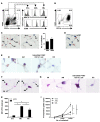
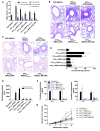

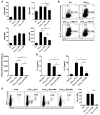
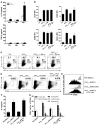
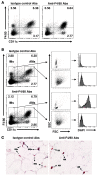
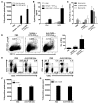
Similar articles
-
Fibrinogen cleavage products and Toll-like receptor 4 promote the generation of programmed cell death 1 ligand 2-positive dendritic cells in allergic asthma.J Allergy Clin Immunol. 2018 Aug;142(2):530-541.e6. doi: 10.1016/j.jaci.2017.09.019. Epub 2017 Oct 14. J Allergy Clin Immunol. 2018. PMID: 29038008
-
Fcgamma receptor-mediated antigen uptake by lung DC contributes to allergic airway hyper-responsiveness and inflammation.Eur J Immunol. 2010 May;40(5):1284-95. doi: 10.1002/eji.200939900. Eur J Immunol. 2010. PMID: 20148421
-
DC-derived TSLP promotes Th2 polarization in LPS-primed allergic airway inflammation.Eur J Immunol. 2012 Jul;42(7):1735-43. doi: 10.1002/eji.201142123. Epub 2012 May 25. Eur J Immunol. 2012. PMID: 22585305 Free PMC article.
-
Biology of lung dendritic cells at the origin of asthma.Immunity. 2009 Sep 18;31(3):412-24. doi: 10.1016/j.immuni.2009.08.008. Immunity. 2009. PMID: 19766084 Review.
-
Lung dendritic cells in respiratory viral infection and asthma: from protection to immunopathology.Annu Rev Immunol. 2012;30:243-70. doi: 10.1146/annurev-immunol-020711-075021. Epub 2012 Jan 3. Annu Rev Immunol. 2012. PMID: 22224777 Review.
Cited by
-
Myeloid cell-derived PROS1 inhibits tumor metastasis by regulating inflammatory and immune responses via IL-10.J Clin Invest. 2021 May 17;131(10):e126089. doi: 10.1172/JCI126089. J Clin Invest. 2021. PMID: 33848267 Free PMC article.
-
Alternative Macrophage Activation Is Increased in Asthma.Am J Respir Cell Mol Biol. 2016 Oct;55(4):467-475. doi: 10.1165/rcmb.2015-0295OC. Am J Respir Cell Mol Biol. 2016. PMID: 27248771 Free PMC article.
-
Mucosal immune responses to infection and vaccination in the respiratory tract.Immunity. 2022 May 10;55(5):749-780. doi: 10.1016/j.immuni.2022.04.013. Immunity. 2022. PMID: 35545027 Free PMC article. Review.
-
CD34 is required for dendritic cell trafficking and pathology in murine hypersensitivity pneumonitis.Am J Respir Crit Care Med. 2011 Sep 15;184(6):687-98. doi: 10.1164/rccm.201011-1764OC. Epub 2011 Jun 3. Am J Respir Crit Care Med. 2011. PMID: 21642249 Free PMC article.
-
Interaction with epithelial cells modifies airway macrophage response to ozone.Am J Respir Cell Mol Biol. 2015 Mar;52(3):285-94. doi: 10.1165/rcmb.2014-0035OC. Am J Respir Cell Mol Biol. 2015. PMID: 25054807 Free PMC article.
References
-
- Michel O., et al. Severity of asthma is related to endotoxin in house dust. Am. J. Respir. Crit. Care Med. 1996;154:1641–1646. - PubMed
-
- Milton D., Johnson D., Park J. Environmental endotoxin measurement: interference and sources of variation in the Limulus assay of house dust. Am. Ind. Hyg. Assoc. J. 1997;58:861–867. - PubMed
Publication types
MeSH terms
Substances
LinkOut - more resources
Full Text Sources
Other Literature Sources
Medical

